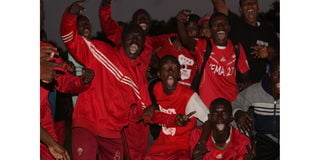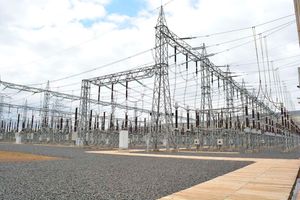Premium
Support KPA, Bandari development programme

Mombasa's Serani Secondary School players celebrate after winning the boys' football final against Kinondo High School of Kwale County during Coast Region Secondary School Term Two Games at Shimo Annex grounds, Mombasa on September 03, 2022.
What you need to know:
- The games were a haven of talent and from a bird’s eye view, sports stakeholders in the coastal region needed to have been at the forefront in talent identification, yet none was there to witness the future stars
- It is saddening to see that aside from Bandari FC and its mother sponsor, the Kenya Ports Authority (KPA), no other entity has been keen to develop talent in the region
- The efforts put in by KPA and Bandari FC should inspire the leaders and sports stakeholders that this is the perfect time to invest in the sport
For many years, the coastal region has been one of the key hubs of football talent growth. This has, however, changed drastically.
The region was endowed with big names that rocked the 80s, 90s and early 2000s, that were key in the national team’s success.
Big names like legendary “Kenya One” Mahmoud Abbas, Mohammed Nazir “Tostao”, and Mohammed Magongo, just to name a few, made this region and the country proud. However, apart from Bandari’s Siraj Mohammed and Abdallah Hassan, the coastal region has failed to maintain a constant presence in the national team “Harambee Stars.”
A few years ago, Bandari FC sought to change this by adopting a system of identifying talent from infancy and developing it to maturity.
This was done because the philosophy of Bandari is not just to play beautiful football, but to make sports an income-generating activity, ensure the longevity of the club as well as grow indigenous talent. This plan is what has led the club to partner with various schools, offer clinics and hold talent identification tournaments all of which are strategic to the growth of the sport and raising its economic value.
The secondary school games which were held this past week at the Shanzu Teachers College and Shimo la Tewa were a perfect example of how rich the region is in footballing talents.
Not only were the games competitive, but they were also entertaining to watch.
Yet only Bandari FC sent scouts and members of its technical bench to spot and promote talent from these school games.
This is perhaps why the region has produced fewer talents for the local leagues and the international market over the years.
The games were a haven of talent and from a bird’s eye view, sports stakeholders in the coastal region needed to have been at the forefront in talent identification, yet none was there to witness the future stars.
It is saddening to see that aside from Bandari FC and its mother sponsor, the Kenya Ports Authority (KPA), no other entity has been keen to develop talent in the region.
If there are no changes soon, most of the talent in the area is bound to go to waste.
The efforts put in by KPA and Bandari FC should inspire the leaders and sports stakeholders that this is the perfect time to invest in the sport.
Bandari FC and KPA alone will not be able to absorb and sustain the abundance of sprouting talent in the area. Talent promotion should be a collective duty.
All stakeholders must play a part in ensuring that football is growing, and in the right direction, and this will be done by joining hands with Bandari FC, KPA and their talent promotion project.




